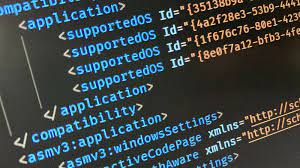Implementing proper error handling and exception handling is crucial when writing PowerShell scripts.
- Use Try-Catch blocks: Surround potential error-prone code or commands with Try-Catch blocks. This allows you to catch and handle specific exceptions that may arise during script execution.
- Catch specific exceptions: Catching specific exceptions gives you more control over how you handle different types of errors. Use the Catch block to handle specific exceptions, and consider logging the error details for troubleshooting purposes.
- Use Finally block for cleanup: If there are any cleanup tasks that need to be executed regardless of whether an exception occurred or not, place that code in the Finally block. The Finally block ensures that the cleanup code is always executed.
- Leverage the ErrorAction parameter: Use the ErrorAction parameter when executing commands to define the desired error action behavior. Common options include Stop, Continue, SilentlyContinue, and Inquire, depending on how you want to handle errors.
- Use Try-Retry for transient errors: When dealing with transient errors, you can use a Try-Retry approach to handle the situation gracefully. In the Catch block, implement logic to retry the operation after a brief delay or a set number of attempts.
- Logging: Implement proper logging mechanisms to capture error details. Logging can help with troubleshooting and identifying any issues that occur during script execution. Consider using the Write-Error cmdlet or a dedicated logging module like PowerShell’s Logging module.
- Validate input parameters: Validate input parameters and user inputs to prevent script failures and unexpected behaviors. Ensure that the inputs meet the expected requirements and provide meaningful error messages when input validation fails.
- Test error-handling scenarios: Validate your error handling approach by testing different error conditions. This ensures that your scripts handle errors as intended and provides an opportunity to refine your error handling logic.
- Graceful error handling: When encountering errors, strive to handle them gracefully. Provide clear error messages, perform necessary cleanup, and return error codes or exceptions that convey useful information to the caller.
- Document error handling strategies: Clearly document your error handling approach within the script or accompanying documentation. This makes it easier for others to understand how errors are handled and troubleshoot issues that may arise.
Error handling and exception handling are essential aspects of PowerShell scripting that help ensure your scripts can gracefully handle unexpected situations. Here are some best practices to follow:
- Use Try-Catch-Finally: PowerShell provides a Try-Catch-Finally construct for handling exceptions. Place the code that might generate an exception within the Try block, and use Catch blocks to define how to handle specific types of exceptions. Finally block is optional and is used to specify cleanup code that should be executed regardless of whether an exception occurred.
try {
# Code that might throw an exception
}
catch {
# Exception handling code
}
finally {
# Cleanup code (optional)
}
```2. Catch Specific Exceptions: Instead of using a generic catch block, catch specific exceptions that you expect to occur. This allows you to handle different exceptions differently and provides more precise error handling.
try {
# Code that might throw an exception
}
catch [System.IO.IOException] {
# Handle IOException
}
catch [System.Management.Automation.ItemNotFoundException] {
# Handle ItemNotFoundException
}
catch {
# Catch any other exceptions
}
```3. Logging and Reporting: Implement a robust logging and reporting mechanism to capture and record errors and exceptions that occur during script execution. This information is helpful for troubleshooting, analyzing script failures, and identifying potential issues.
- Use the
Write-Errorcmdlet to log error messages. - Consider leveraging a dedicated logging module like
Log4NetorPSFrameworkfor more advanced logging capabilities. - Include relevant information in error messages, such as timestamps, error codes, and affected resources.
4. ErrorAction and ErrorVariable: PowerShell provides the ErrorAction parameter and ErrorVariable common parameter to control how errors are handled and where they are stored.
- Use the
ErrorActionparameter to define the desired error handling behavior (e.g.,Stop,Continue,SilentlyContinue). - Use the
ErrorVariableparameter to capture errors in a variable for further processing or reporting.
5. Validate Input: Validate user input, function parameters, and external data to prevent potential errors and ensure that the script operates with expected values.
- Use parameter validation attributes like
[ValidateNotNull],[ValidateRange], or custom validation attributes to enforce input constraints. - Validate input against expected types, formats, or ranges.
- Implement input sanitization techniques to prevent code injection or unexpected behavior.
6. Graceful Error Handling: Aim for graceful error handling that provides informative and user-friendly error messages, allowing users or other systems to understand the issue and take appropriate actions.
- Include meaningful error messages that describe the problem and suggest solutions or next steps.
- Consider localization or internationalization of error messages for multi-language support.
- Provide clear instructions on how to report errors or seek assistance.
7. Test Error Scenarios: Test your scripts with various error scenarios to ensure that error handling mechanisms work as expected. Cover different exception types and error conditions relevant to your script’s functionality.
- Write test cases that deliberately trigger exceptions and verify the expected behavior.
- Use tools like Pester (https://github.com/pester/pester) for automated testing of error handling.
8. Document Error Handling: Document the error handling strategy and behavior of your scripts, functions, or modules. This helps other users or maintainers understand how errors are handled and what to expect when using your code.
- Include comments or help documentation that describe the error handling approach.
- Document the expected behavior for different exception types.
By following these error handling and exception handling best practices, you can build scripts that handle errors effectively and provide a reliable and robust experience to users. Good error handling enhances script stability and helps with diagnosing and resolving issues.
